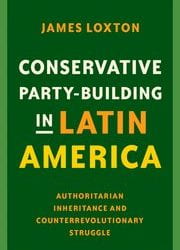Poverty in Brazil in Times of Pandemic
Growing up in the 1970s in Brazil was a mixture of adventure and fear. Imagine a child in a lower-middle-class family very involved in fighting the military dictatorship that ruled the country. On a black-and-white, old television, the anchor of Reporter Esso, Hilton Gomes, read the news from a country that was not the real Brazil. “Brazil, Love It or Leave It” was all over the city’s newsstands. In silence and whispering, the families dedicated to the return of democracy plotted the resistance to the dictators with anger and fear. The schools also taught Brazil far from reality: a developing Brazil, without corruption, without the torture of political prisoners, and with the steadfast protection of traditional family values.
The 70s were when soccer was on the agenda, contributing to the alienation of the people highlighted by the title of three-time world champion, right at the beginning of the decade, “90 million in action.” Furthermore, in the decade, Roberto Carlos, Brazil’s most famous singer, released his most significant hit as a film actor with the movie “Roberto Carlos at 300 kilometers per hour”.
However, despite all this positive propaganda, a strange disease was frightening school children and their families. The symptoms were high fever, nausea, vomiting and severe headaches in schools. The meningitis epidemic occurred between 1971 and 1976 and was centered in São Paulo.
The military dictatorship kept silent and censured any mention of the epidemic in the media. While meningitis cases were restricted to poor areas of the country, censorship worked. However, the dictatorship could not hide the epidemic from the population when the number of deaths increased in upscale neighbourhoods in Rio and São Paulo.

O Globo, 1974 (Brazilian National Archive) The military dictatorship treated the meningitis epidemic as a case of national security.
Throughout history, other epidemics have occurred, causing fear and countless deaths, but the current one is incredibly impactful because of the speed with which it spread across the planet. Comparing the meningitis epidemic in the 70s and the Covid-19 pandemic in Brazil, we find some similarities. The current pandemic has killed more than 600,000 people in Brazil, while meningitis in 1974 killed 2,500 in the State of São Paulo, 304 in Rio de Janeiro and 111 in the State of Rio Grande Do Sul. However, because of the dictatorship’s censorship, it is believed that these data on meningitis are underestimated.

Hospital Emílio Ribas during the peak of the Meningitis Epidemic in 1974. São Paulo, Brazil
In February 2020, the first case of Covid-19 in Brazil was confirmed. Then, the disease was limited to the upper-middle-class areas of the country’s main cities, carried by people who had traveled abroad. Now, in just over the last three months, half of those killed by Covid-19 in Brazil are Black and poor people, and the disease continues to advance in the poorest sectors of the large cities.
During the meningitis outbreak between 1971 and 1974, structural racism can be seen as the factor that has exposed the Black and poor population to the worst living conditions for decades. By the time population was informed about the severe disease, Brazilians had learned that in 1972 meningitis had killed more than 400 people with at least 12,000 cases in the city of São Paulo alone.
Brazil in the 1970s and Brazil in 2021, we cannot isolate the social conditions of ethnic, racial and social belonging from the fact that most infected people are Black or mixed-race (data from the Brazilian Institute of Geography and Statistics [IGBE]) and low-income individuals. Argentine sociologist Carlos Hasenbalg, who died in 2014, created the “cumulative cycle of disadvantages” theory. Hasenbalg argues that Blacks and poor people lack social mobility and are always at a social and economic disadvantage caused by structural racism and poverty.
What does this theory clarify about both epidemics? First, because it imposes more obstacles when we think about income generation and employability of the most vulnerable sectors of the population. Those disadvantaged people today depend entirely on the Unified Health System (SUS in Portuguese), an improved extension of the old National Institute of Social Security (INPS), the government department responsible for pensions and the public health system in the 1970s.
This current pandemic has demonstrated that Brazilian society has improved in many aspects and yet remains unequal. This inequality has been observed in many sectors previously ignored by research. Health workers, for example, have been exposed to a veritable social and political war. Even so, President Jair Bolsonaro, during his speech to the United Nations last September, did not mention a single word of solidarity with health professionals or the families who lost relatives and friends to the pandemic. On the contrary, Bolsonaro is personally involved in corruption scandals using the pandemic to facilitate financial gains for his allies. The two photos below demonstrate that we see the same paradox in the government’s disregard for the most vulnerable even in periods so far apart. Concerned about the impact of the meningitis outbreak on elections, the military government only in 1974 allowed the population to have access to information on the alarming number of cases of the disease. The military feared that there would be adverse effects on the upcoming elections (photo 1). The Bolsonaro government was slow to admit and act on the Covid19 pandemic. On March 10, 2020, alongside the then President of the United States, Donald Trump, Bolsonaro minimized the data on the number of deaths in Brazil by Covid, contending in a mocking tone that it was just “the little flu.”

The Parliamentary Inquiry Commission (CPI in Portuguese) report points to President Bolsonaro as one of the prominent people responsible for the greatest sanitary tragedy in the country’s history, which has already caused more than 605,000 deaths. Credit: The Guardian UK 2021
In the meningitis outbreak, the accurate number of cases has never been documented. However, the press reported 19,000 cases and 1,600 deaths. Likewise, in addition to underestimated numbers at the beginning of the Covid-19 pandemic in Brazil, poor and Black people were not a priority in planning the control of the disease and then providing vaccinations. Research has shown that health is socially determined. The Covid pandemic and the meningitis outbreak in the 1970s highlighted what health researchers and social scientists have warned about for a long time: Brazil’s Unified Health System (SUS) has been scrapped to meet the interests of private companies linked to the health area. Both the former National Institute of Social Security and Health of the 1970s and the current Unified Health System were expensive and ineffective. Nevertheless, they form and still are the only health care, treatment and prevention option for most people who cannot afford a private health plan. It is estimated that more than 70% of the poor and Black population in Brazil depend on the services offered by the Unified Health System.
Why do Brazilian authorities, both in the 70s and now, ignore the scientists’ warning about pandemics? In the first case, the country lived under a military dictatorship, and censorship prevailed in all sectors of society. Nevertheless, both the military and the current government were aware of the risks that Brazilian society was running with the spread of meningitis and Covid-19 in poor areas of Brazilian cities. Moreover, they ignored the warnings for political reasons in both cases. Furthermore, what does this Covid-19 epidemic in more developed Brazil have to teach the population in general? The proportion of the economic and historical contexts aside, there is a recurring pattern that can contribute to our understanding of the public health measures taken by the federal government.
Poverty, overcrowding and lack of sanitary conditions create a perfect backdrop for the spread of epidemic diseases. Moreover, these conditions were present both in 1974 and now. What epidemics have proven is that these people do not have their way of living with dignity. Adequate access to water, electricity and sewage are fundamental human rights but not for the poorest. The lack of this access leads to disease spread.
During the meningitis and Covid-19 epidemics, poor and Black people became more vulnerable without protecting themselves against the epidemics. Between 1971 and 1974, this population was unaware of the risks of meningitis. Today, it remains less able to comply with social isolation because of a need to work. Furthermore, when the poor get sick, they find the public health system to be quite limited.
In short, the vulnerability of the poorest continues to generate considerable inequalities about who can escape meningitis or death by Covid-19. In Brazil, even the spread of diseases and deaths is not democratic.
Giovane Batista worked as a researcher and university professor in Brazil for many years. He is now a data analyst and schoolteacher in Vancouver, Canada.
Related Articles
A Review of Cuban Privilege: the Making of Immigrant Inequality in America by Susan Eckstein
If anyone had any doubts that Cubans were treated exceptionally well by the United States immigration and welfare authorities, relative to other immigrant groups and even relative to …
A Review of Conservative Party-Building in Latin America: Authoritarian Inheritance and Counterrevolutionary Struggle
James Loxton’s Conservative Party-Building in Latin America: Authoritarian Inheritance and Counterrevolutionary Struggle makes very important, original contributions to the study of…
Endnote – Eyes on COVID-19
Endnote A Continuing SagaIt’s not over yet. Covid (we’ll drop the -19 going forward) is still causing deaths and serious illness in Latin America and the Caribbean, as elsewhere. One out of every four Covid deaths in the world has taken place in Latin America,...



